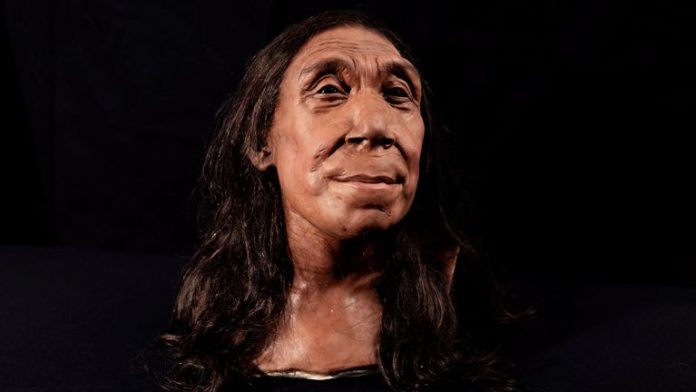Archaeologists have reconstructed the human-like face of a Neanderthal woman who lived 75,000 years ago in a cave where the extinct species may have conducted unique burial rituals, The Independent reports.
Bone fragments of a Neanderthal woman named Shanidar Z were first discovered in 2018 in a cave in Iraqi Kurdistan, where her people may have returned repeatedly to lay their dead to rest.
Research since the 1950s has shown that Neanderthals buried their dead in the cave and performed funerary rituals such as burying them on a bed of flowers.
In fact, evidence collected from this cave suggested for the first time that Neanderthals were much more sophisticated than the primitive creatures many people thought they were, based on the stocky build and ape-like eyebrows associated with this archaic human species.
Although Neanderthals, who are thought to have died out 40,000 years ago, had skulls very different from human skulls, the reconstructed face of this woman – a Neanderthal believed to have been in her 40s when she died – shows that their appearance was humanoid.
The woman’s remains, including a skull flattened to about 2cm thick, are among the best-preserved Neanderthal fossils found this century, the researchers said.
After carefully dissecting the remains, including her skeleton almost to the waist, the Cambridge researchers used a glue-like consolidant to strengthen the bones and surrounding sediment.
They extracted Shanidar Z in the form of small blocks wrapped in foil from beneath 7.5 metres of soil and stone in the centre of the “burying flowers” cave. They then pieced together more than 200 fragments of her skull to restore it to its original shape, including the upper and lower jaws.
The researchers scanned the reconstructed skull and printed it on a 3D printer, adding layers of artificial muscle and skin to reveal her face. According to the researchers, the cave may have served as a landmark for the Neanderthals, as it appears to have been a unique place for reburials.
